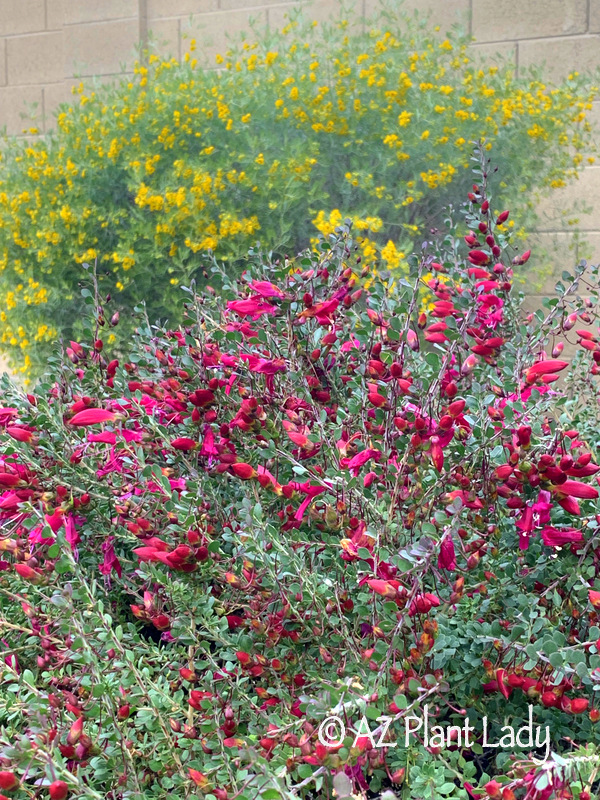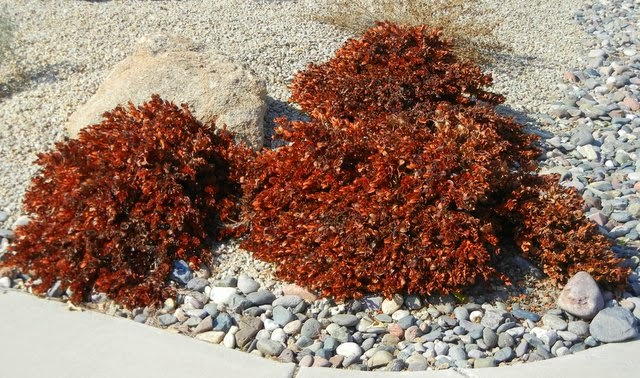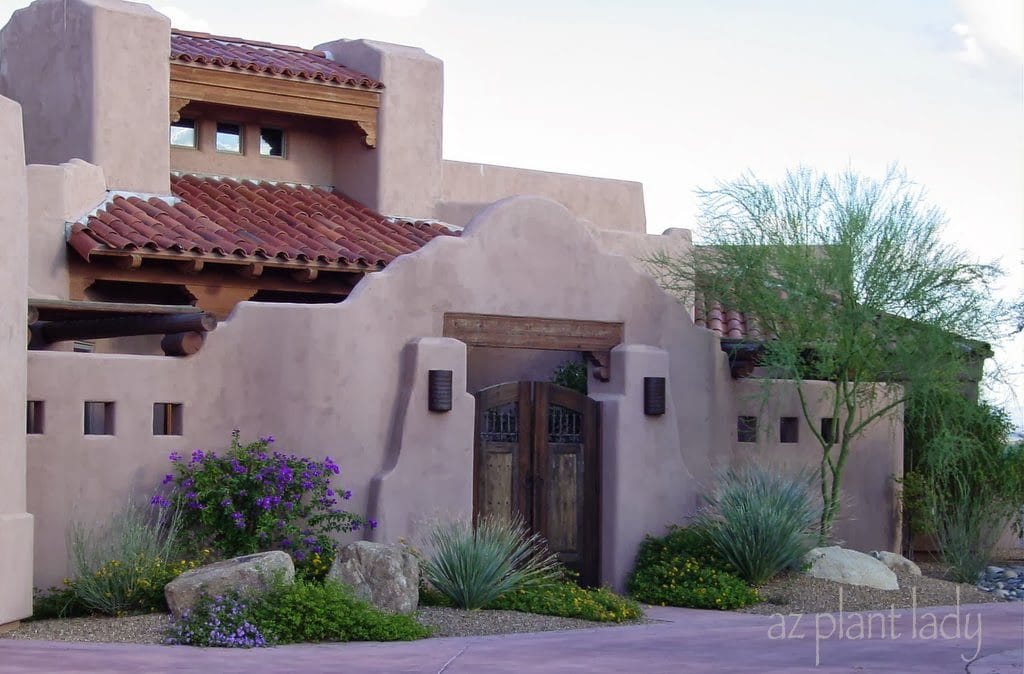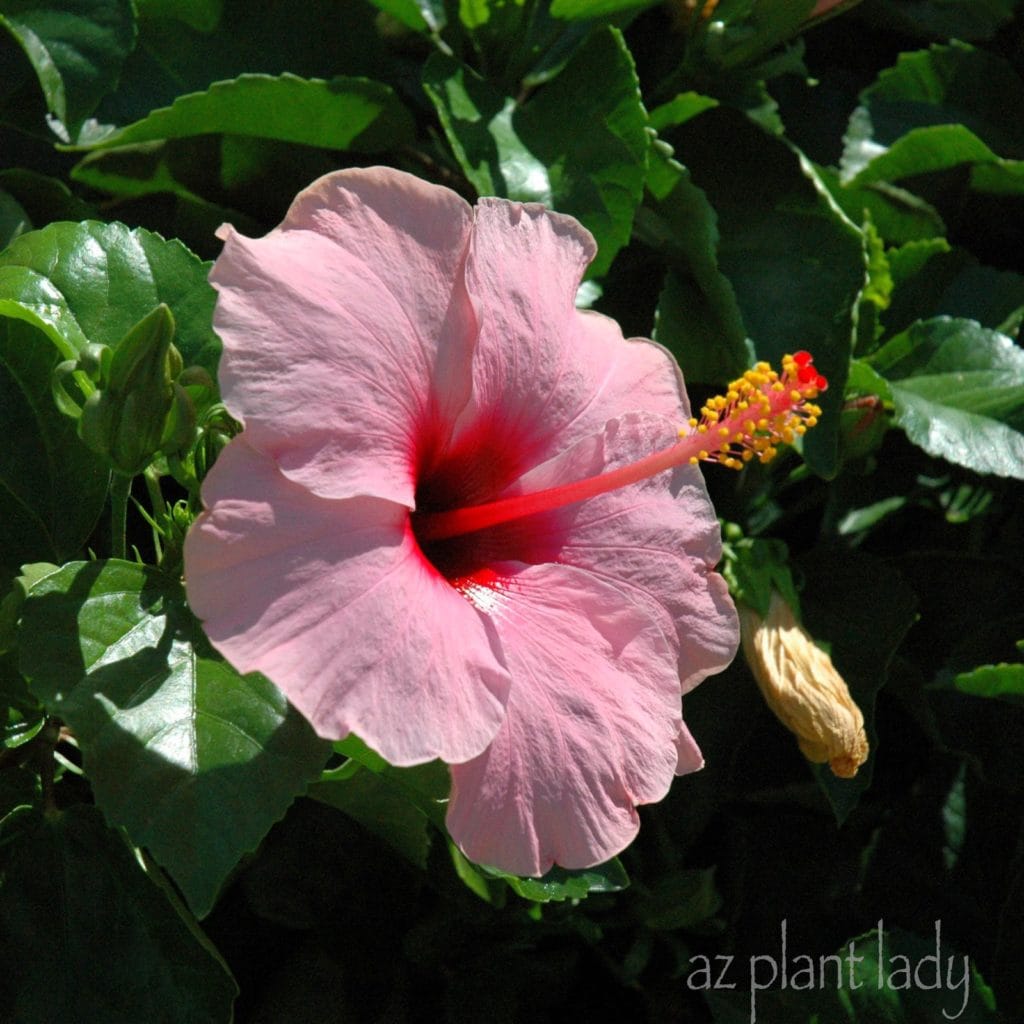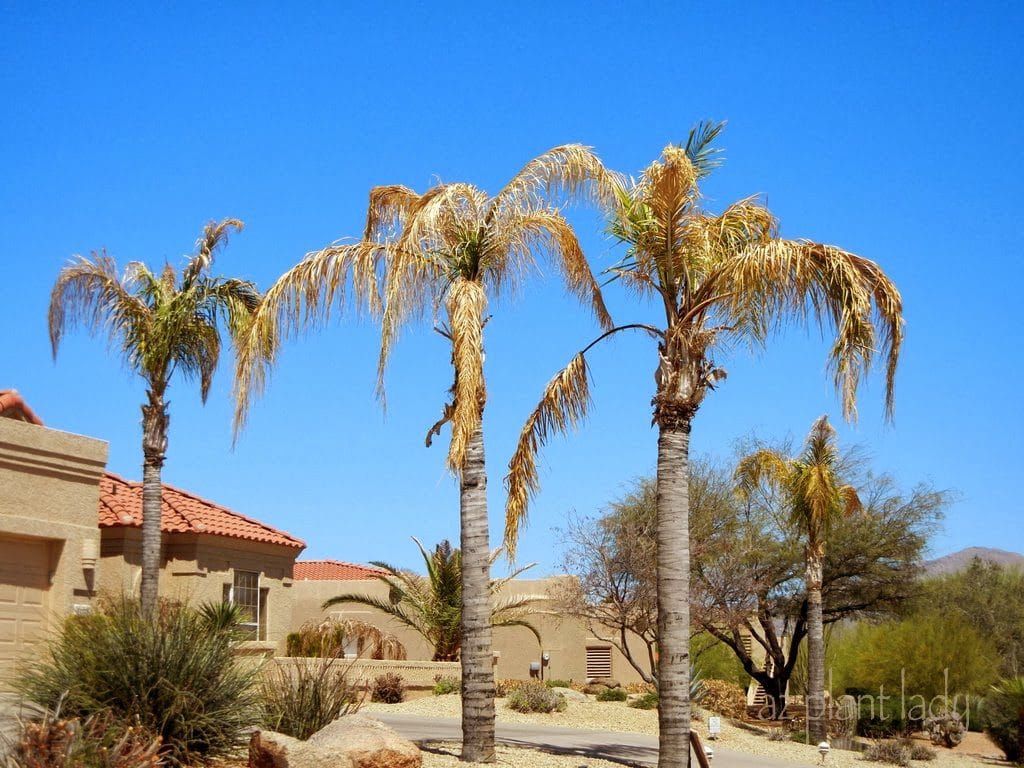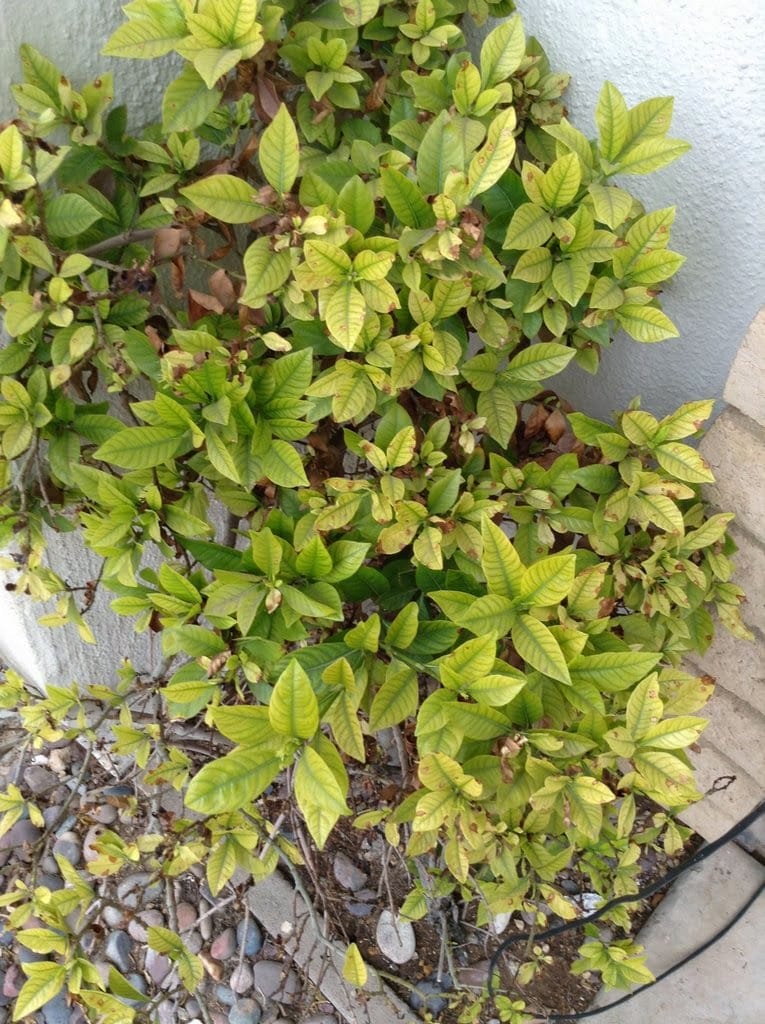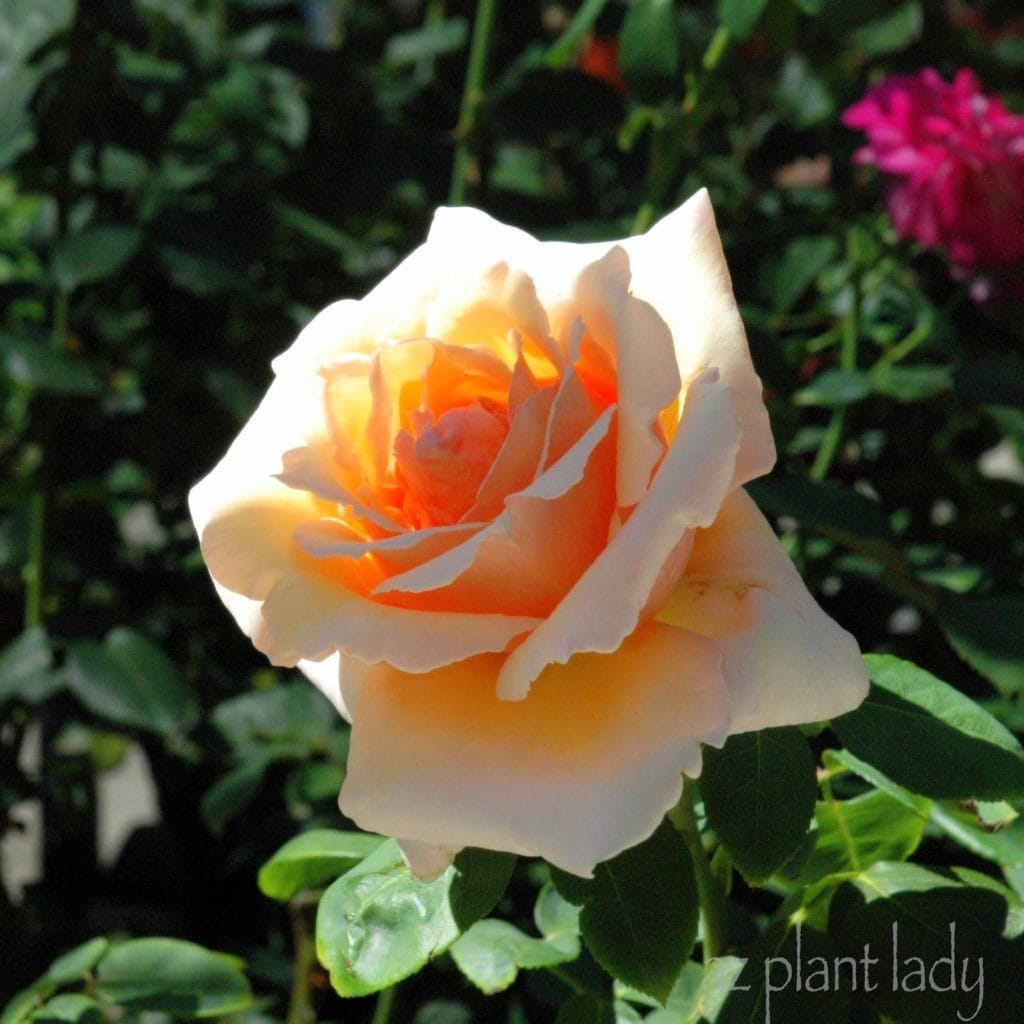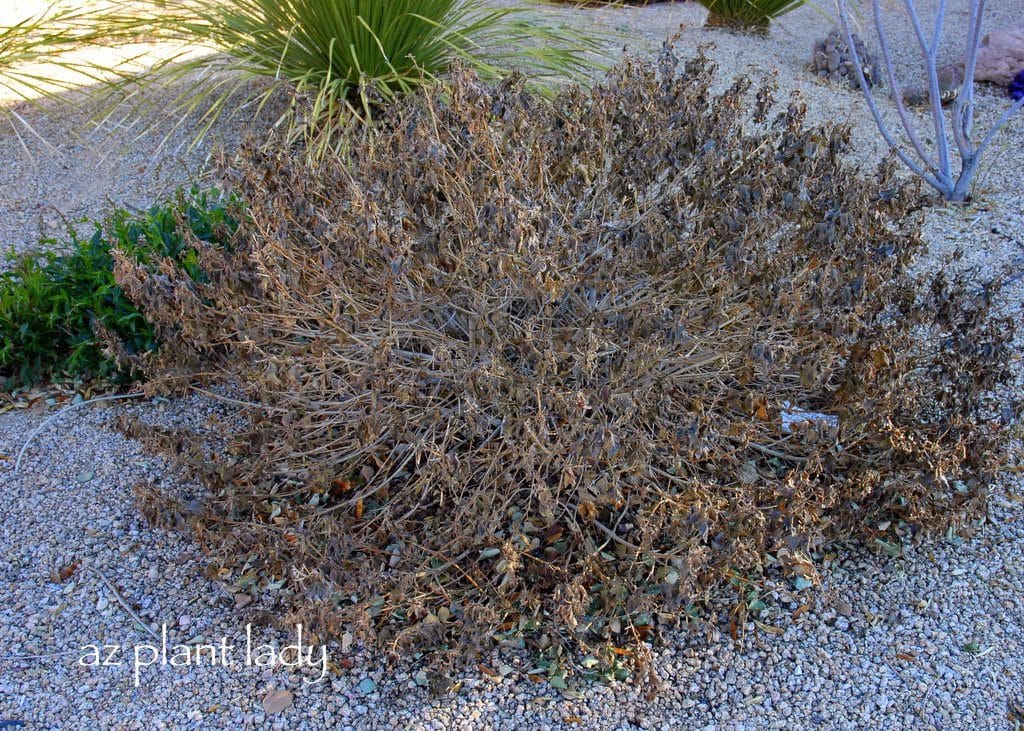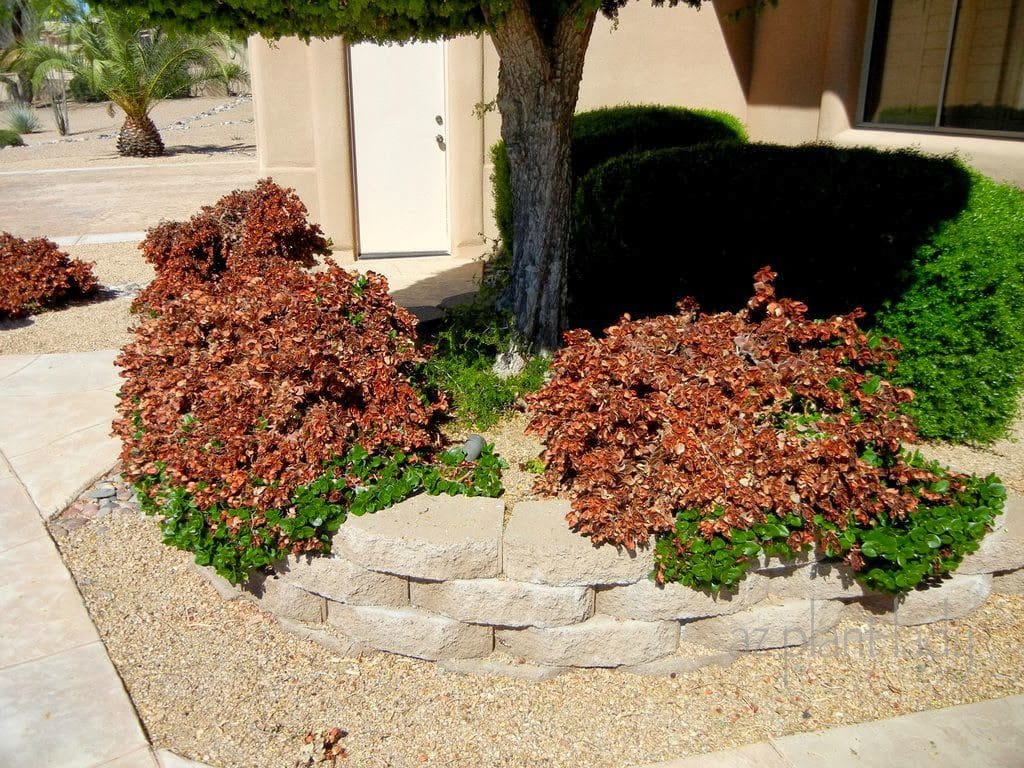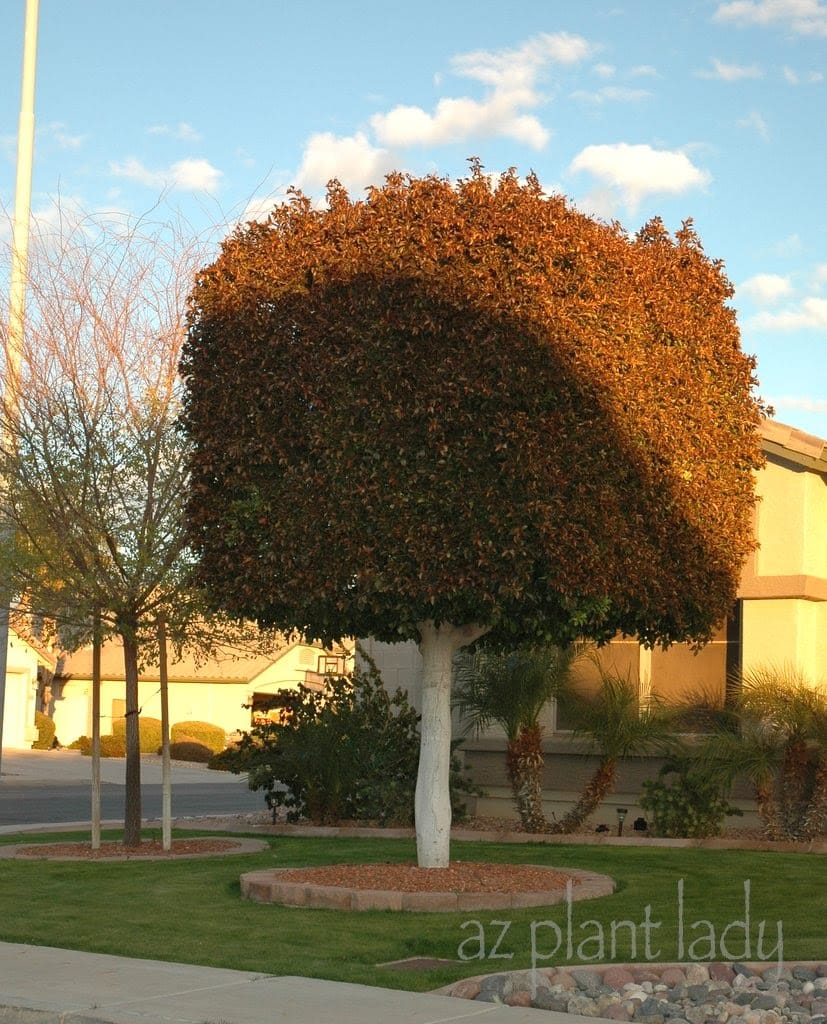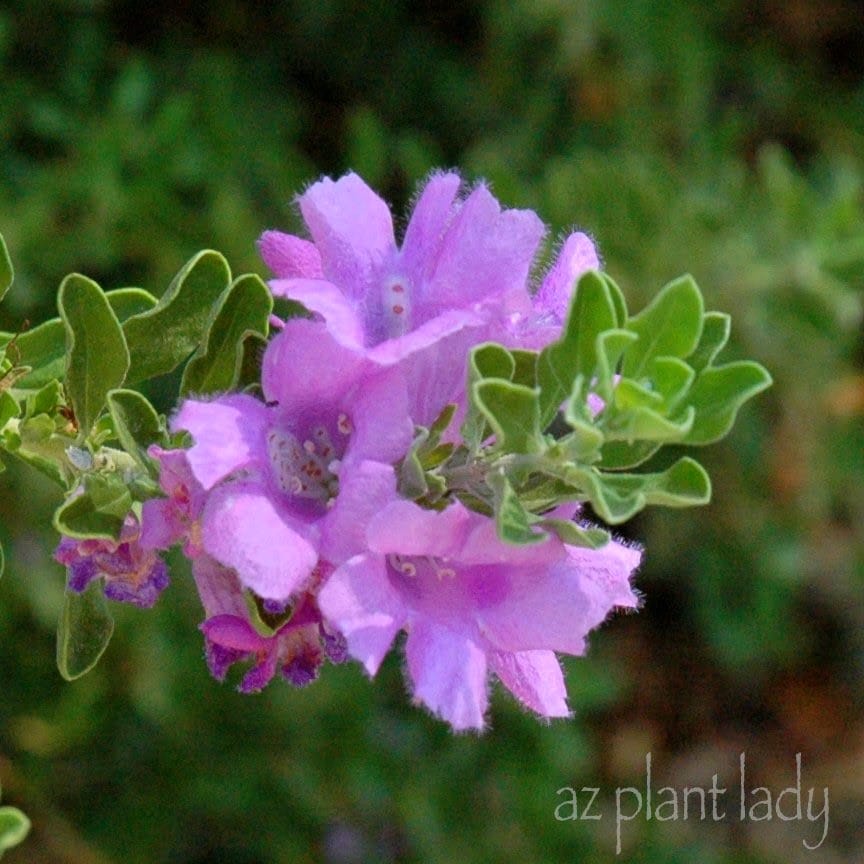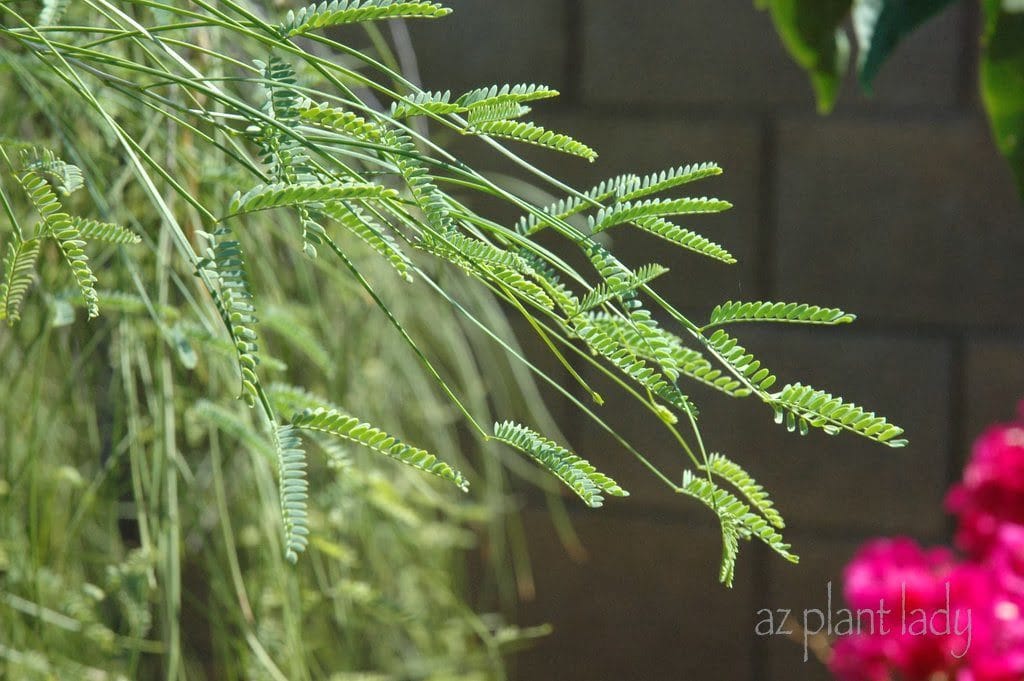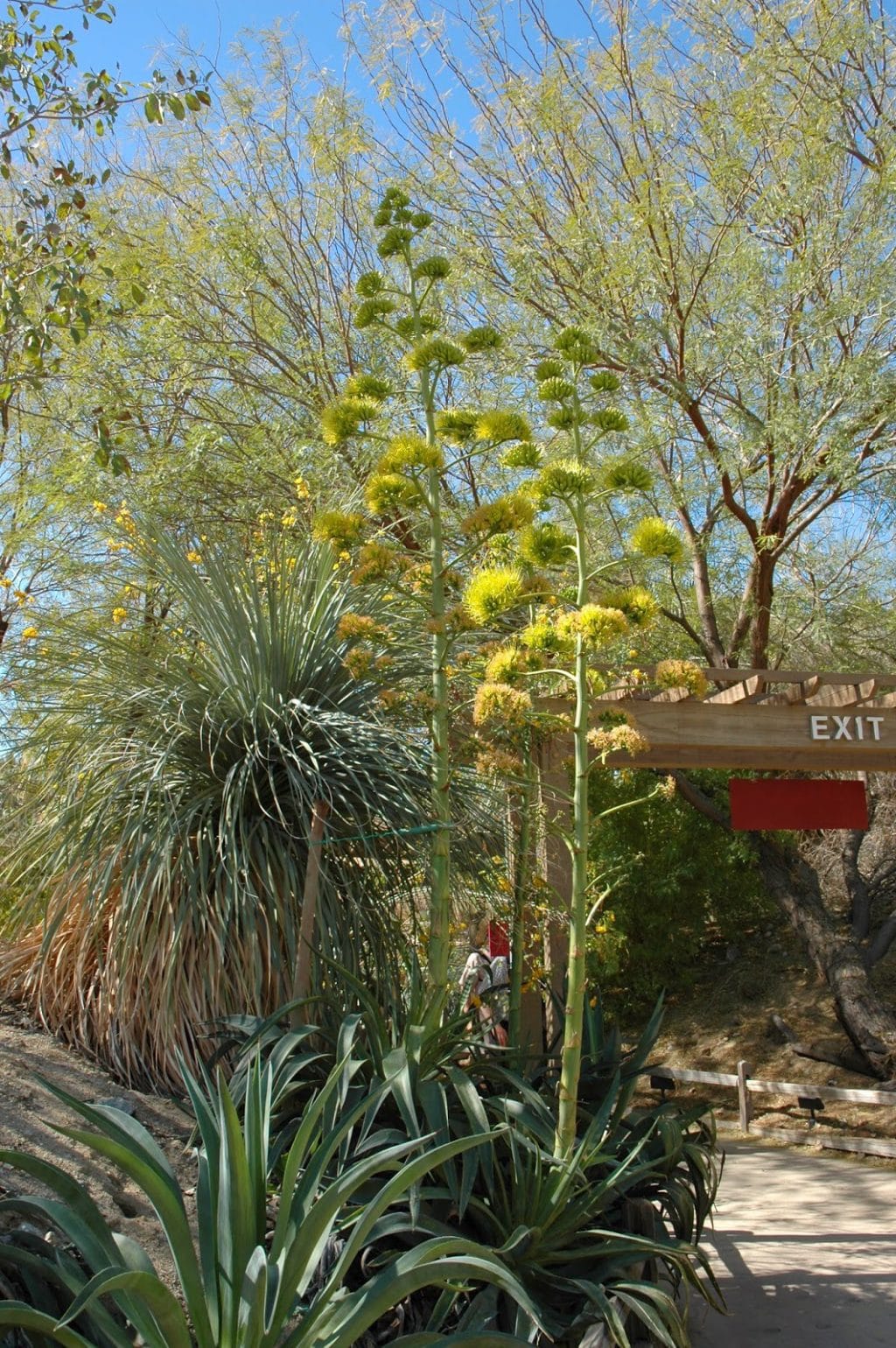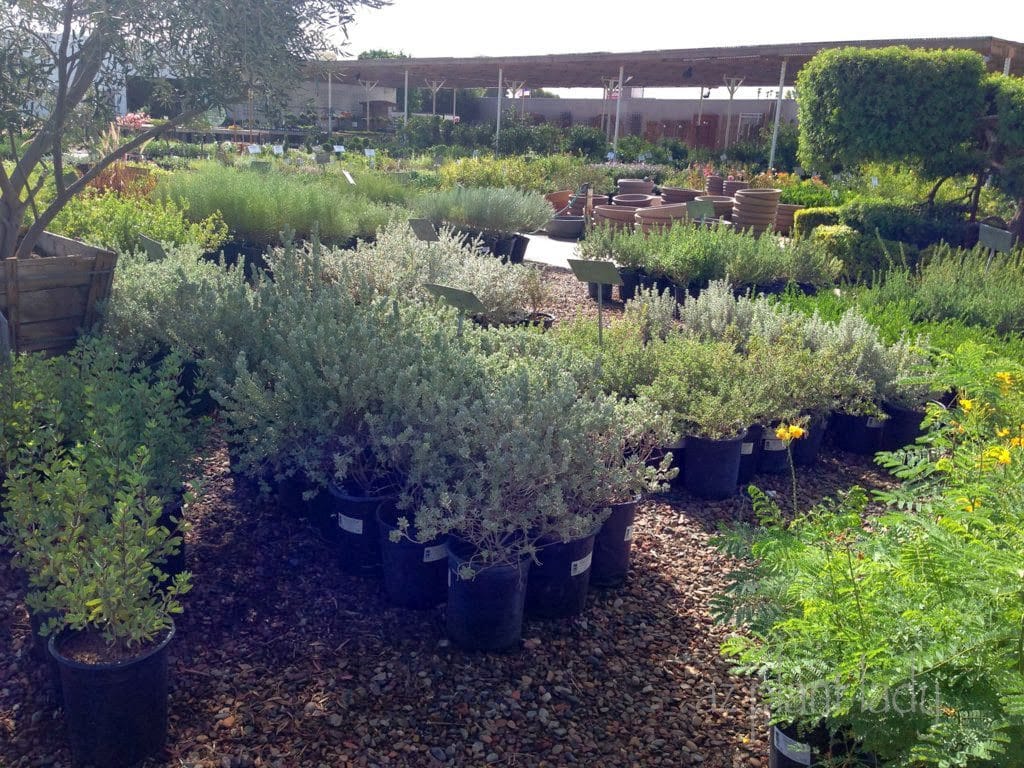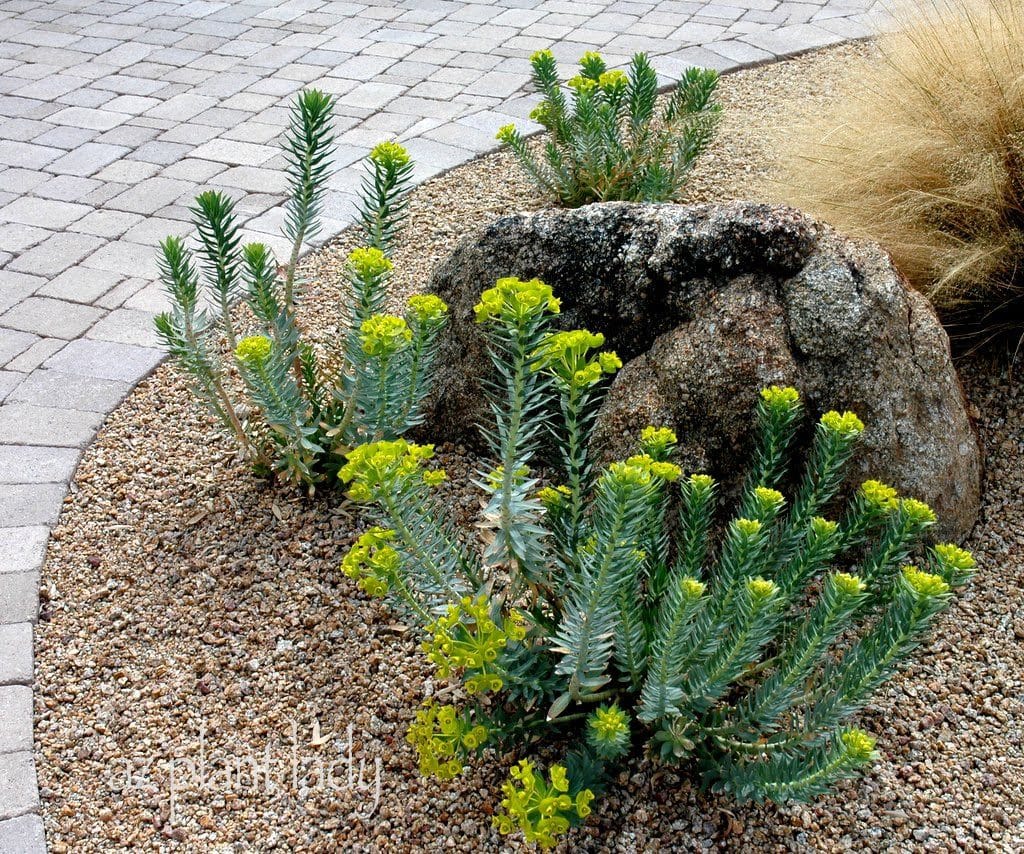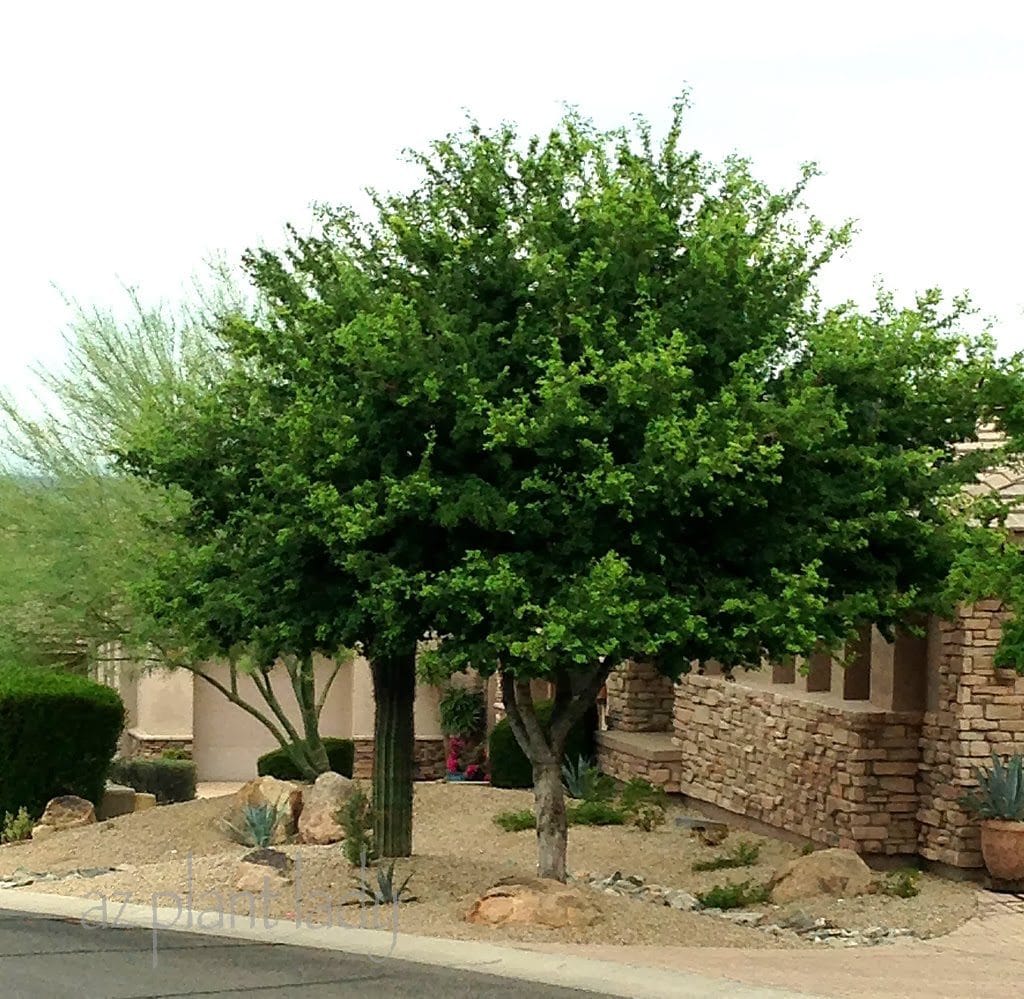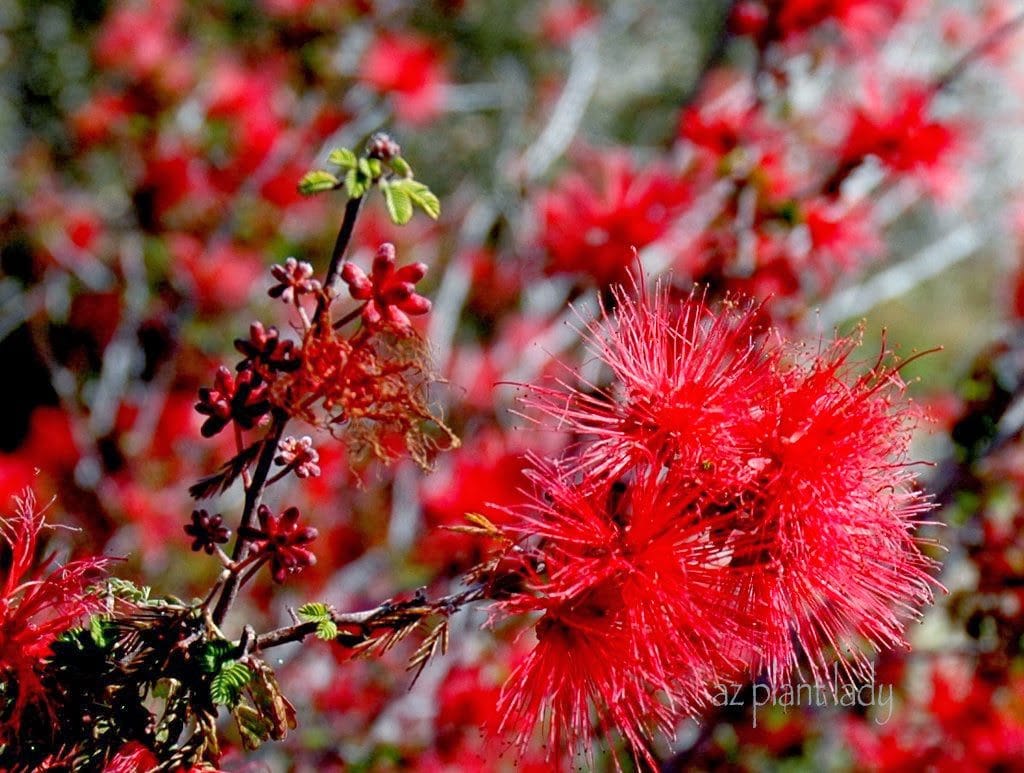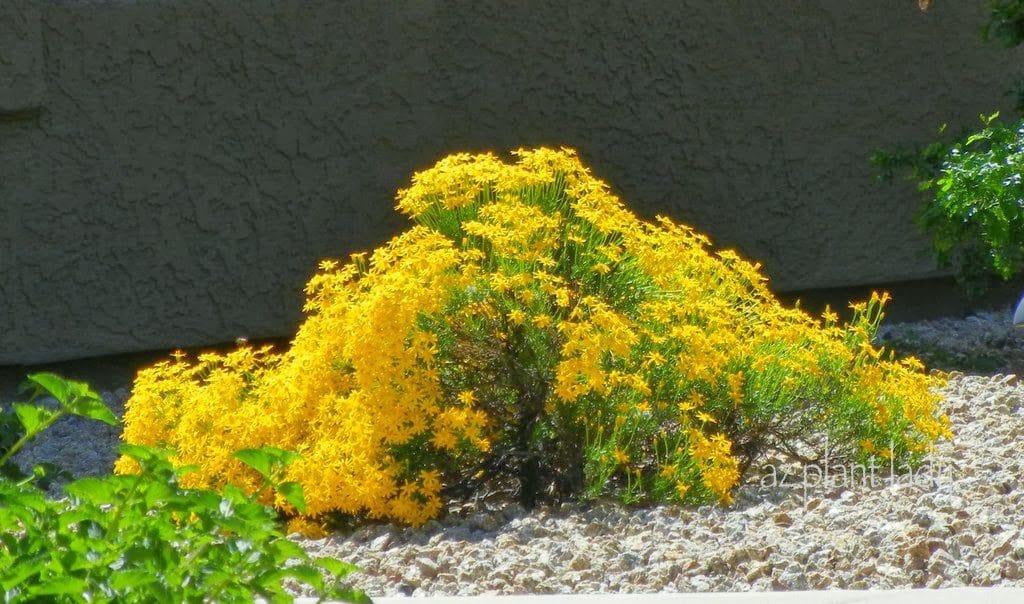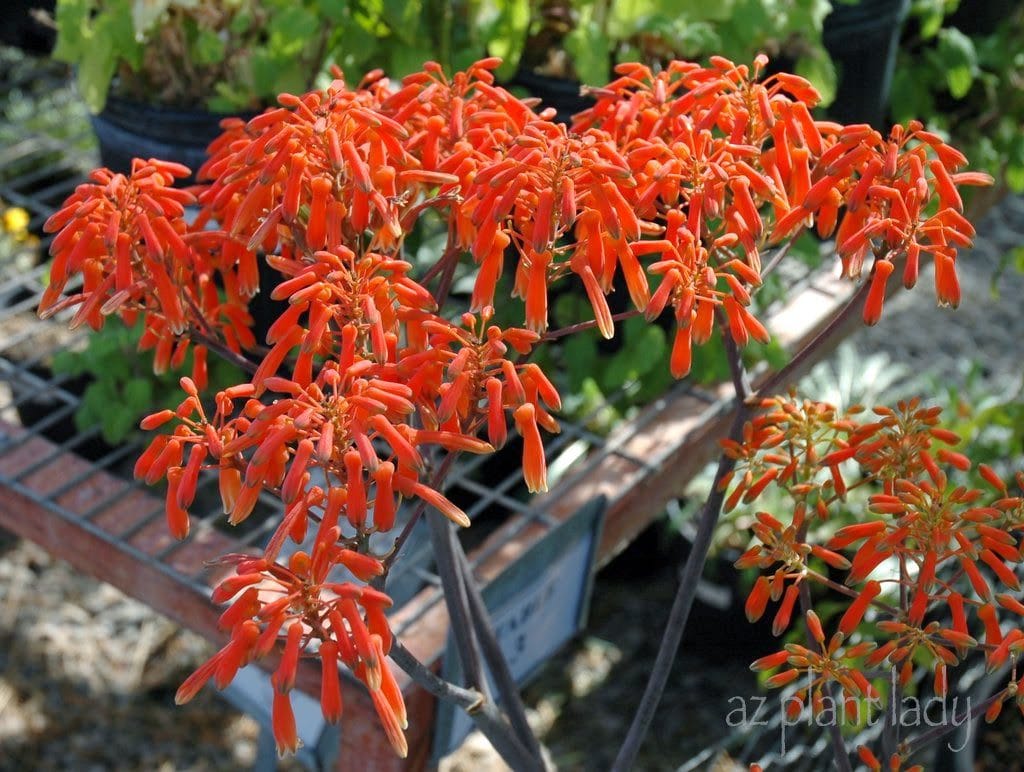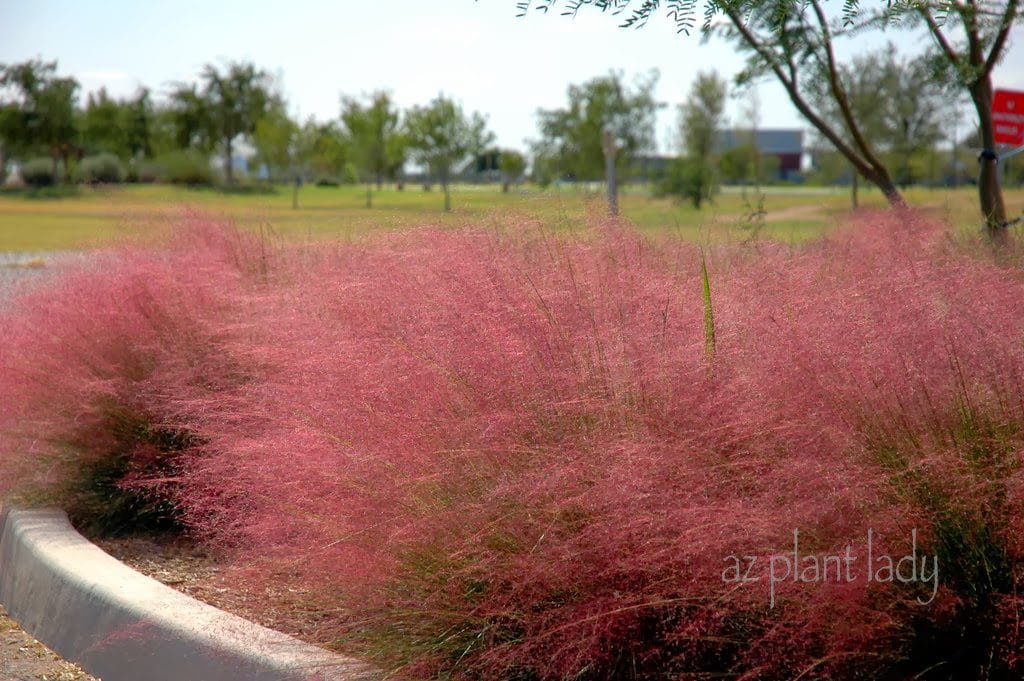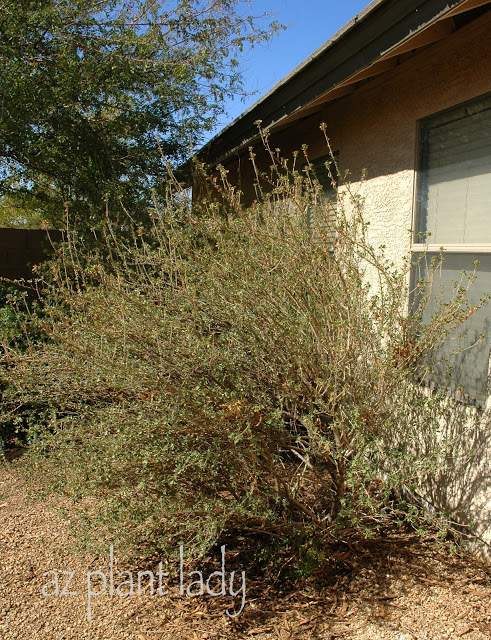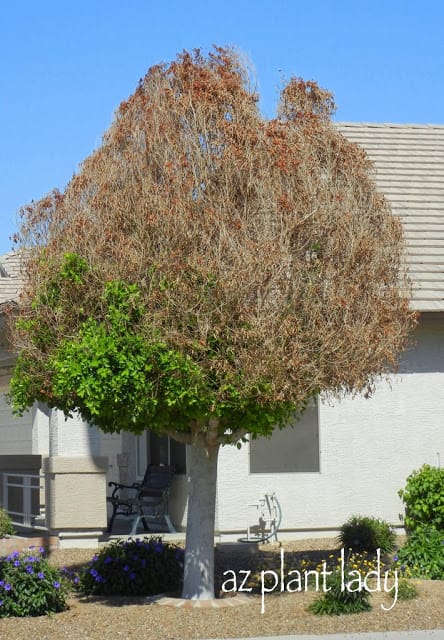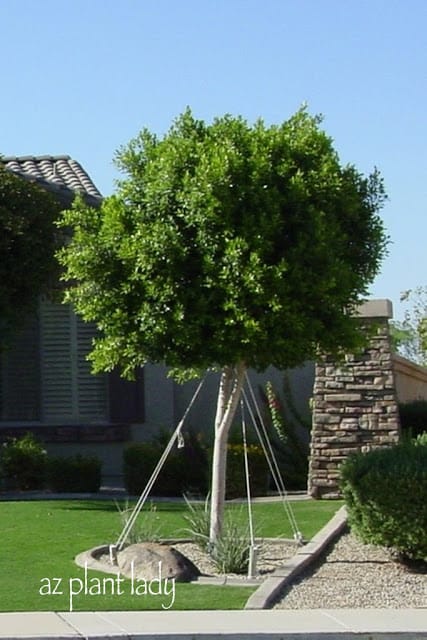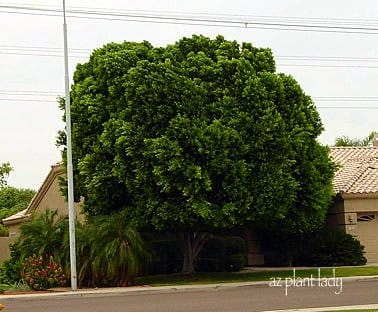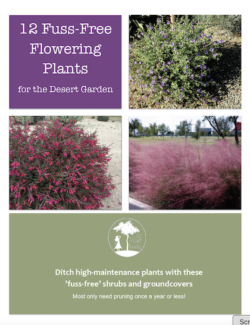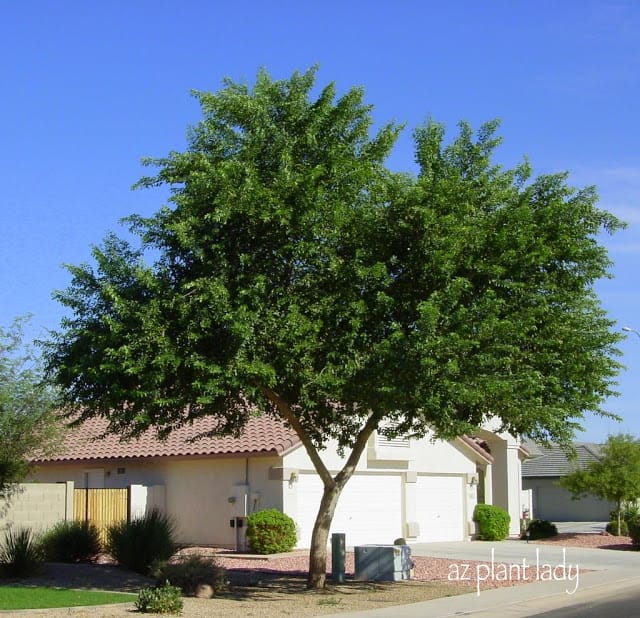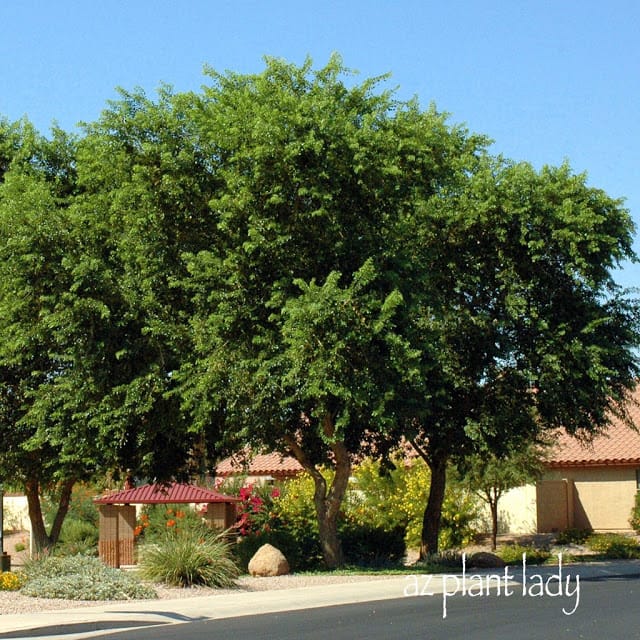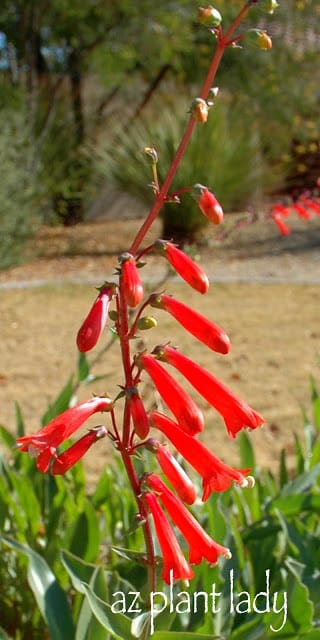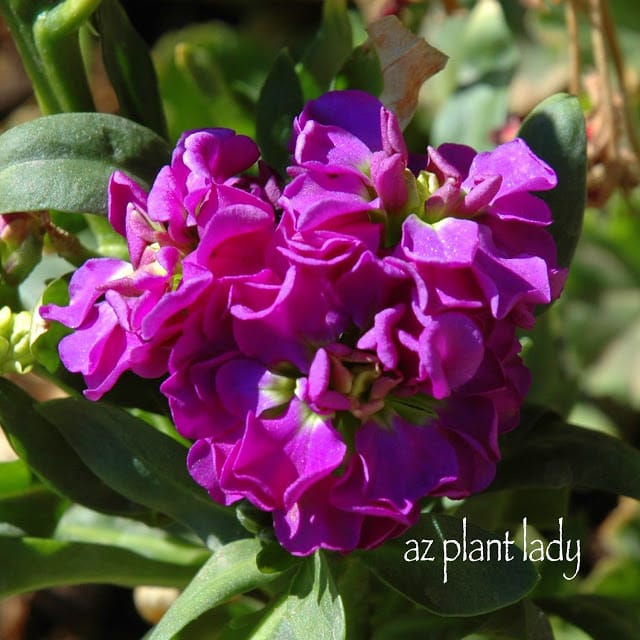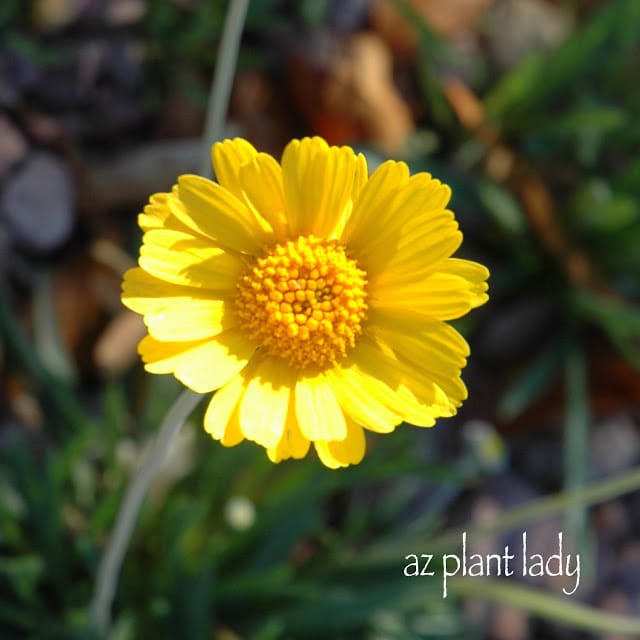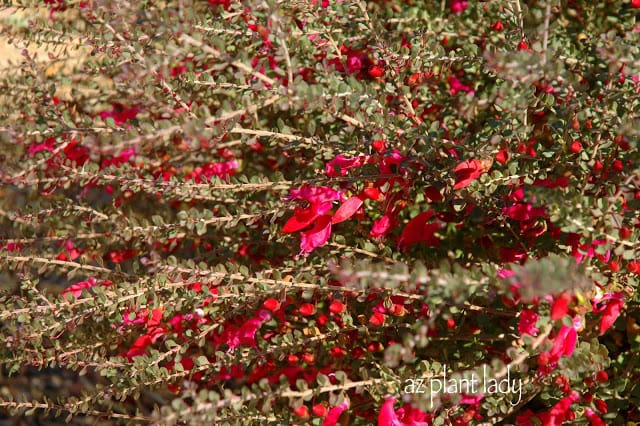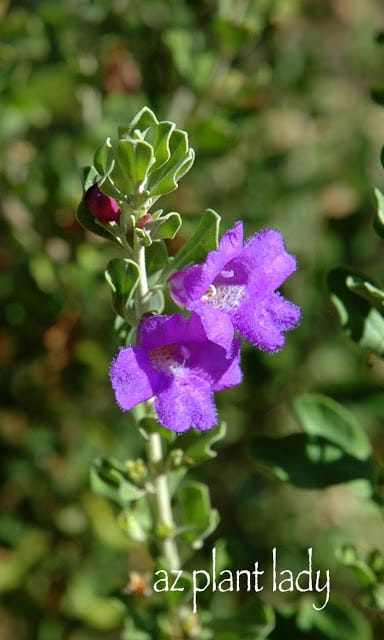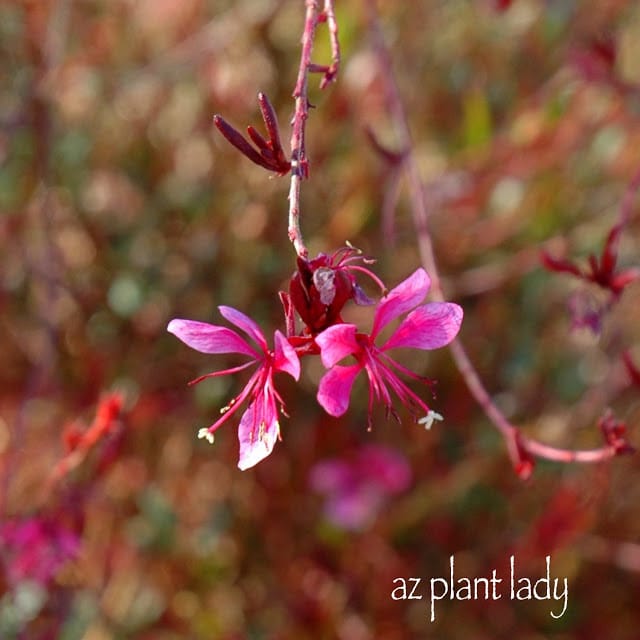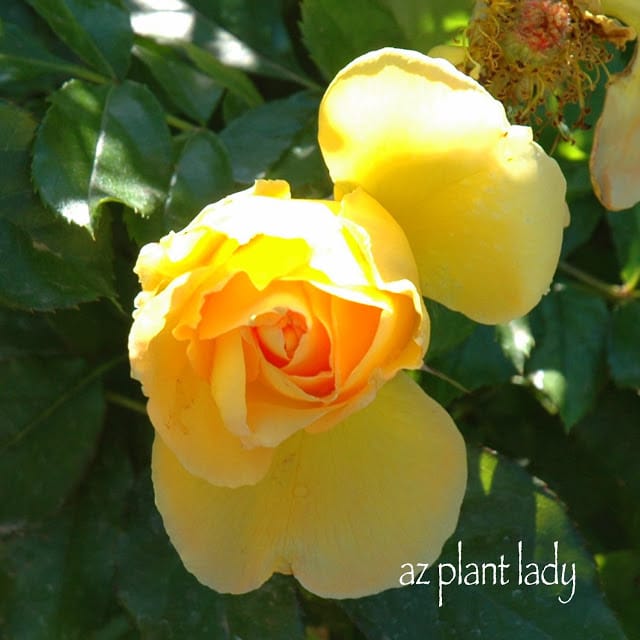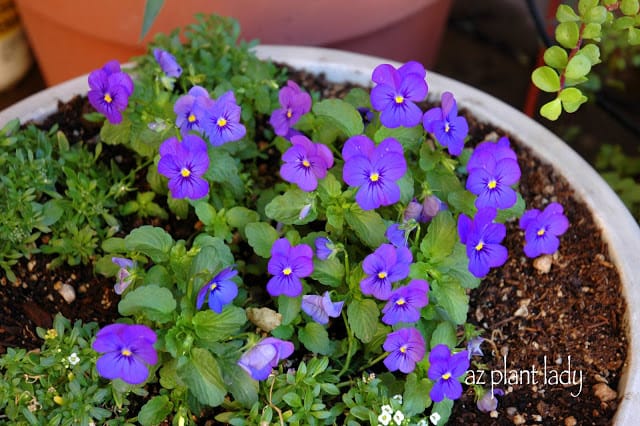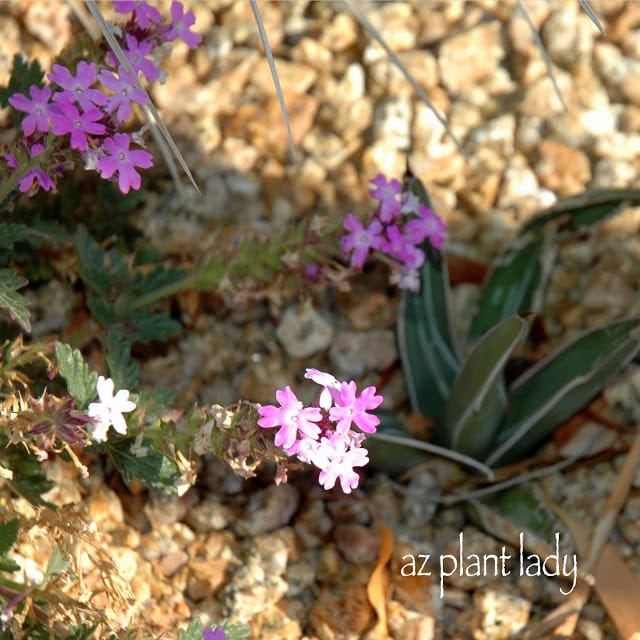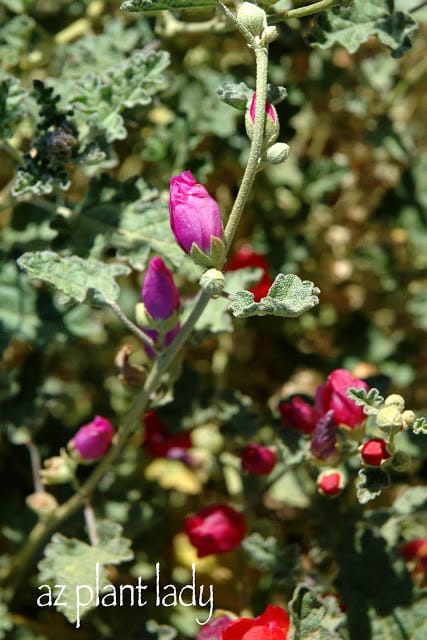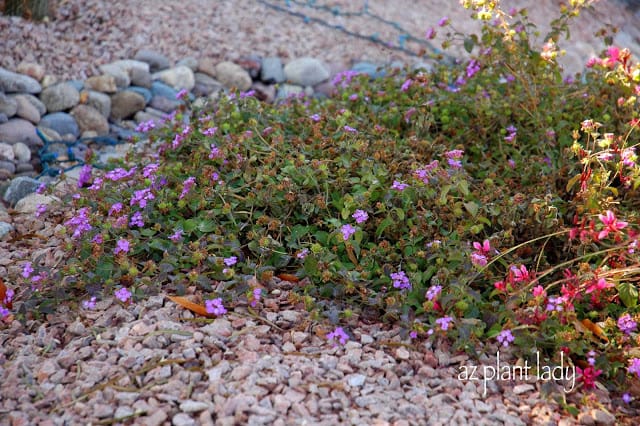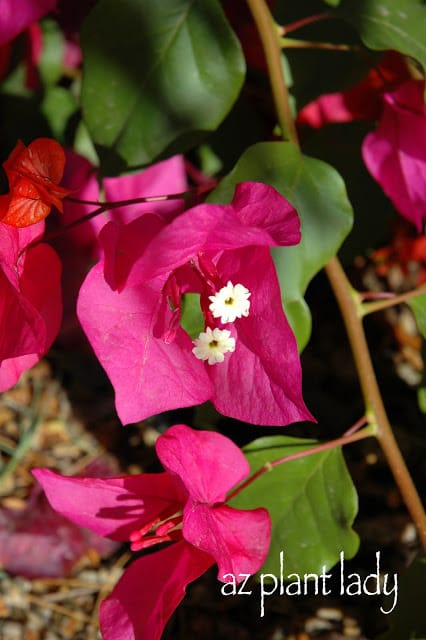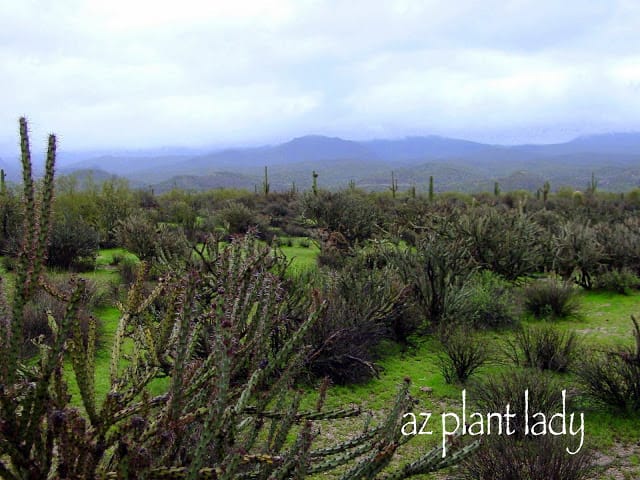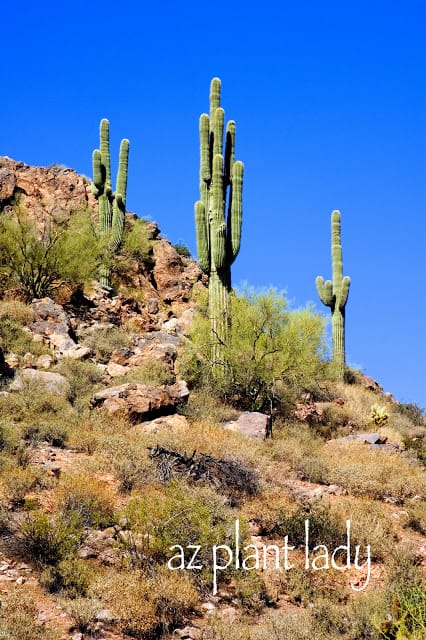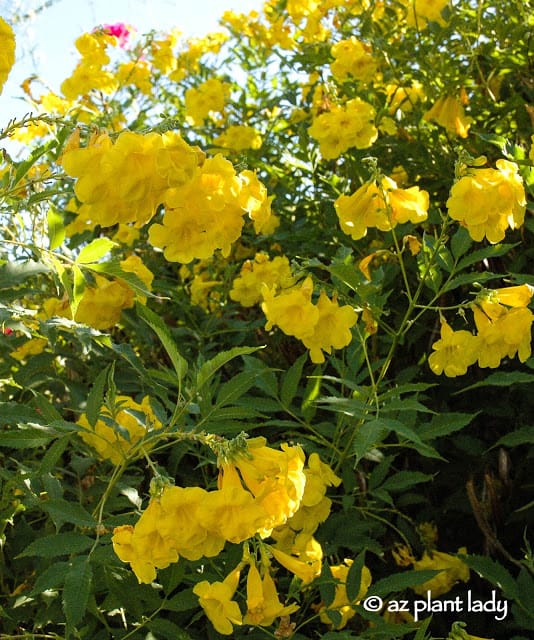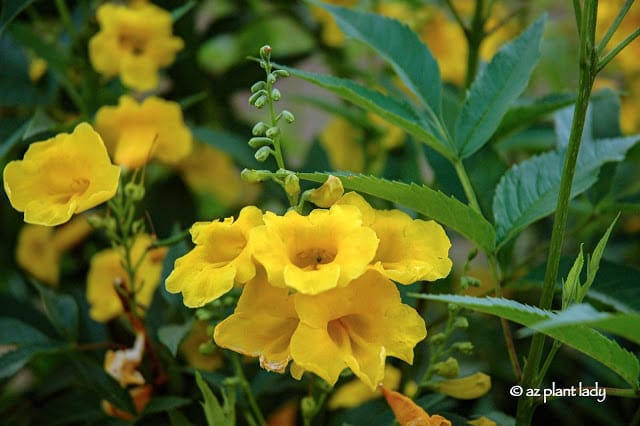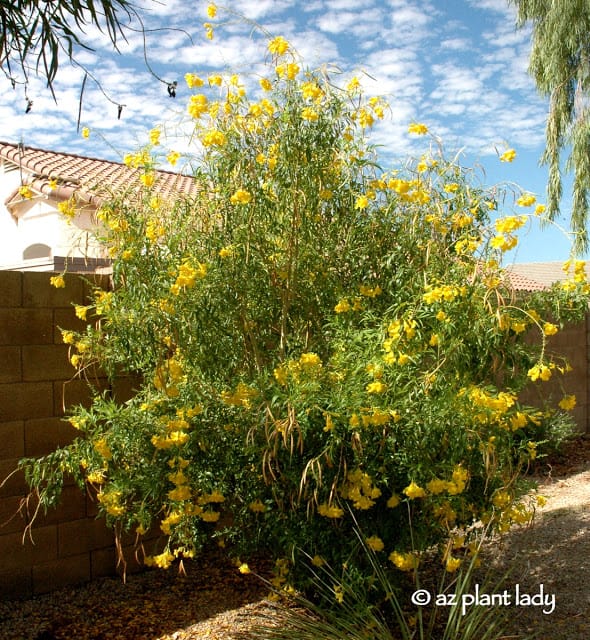*This blog post contains affiliate links. If you click through and make a purchase, I may receive a commission (at no additional cost to you). Thanks for your support in this way.
Do you have a sustainable landscape?
One that does not require excessive amounts of fertilizer, water, pruning, gasoline or time?
Over the past week, we have been talking about what a sustainable landscape is. We learned about the definition of sustainable landscaping and saw examples of both good and bad landscapes in the post, “What Is a Sustainable Landscape.”
In the latest post, we talked about four mistakes that people make that keep their landscape from being sustainable such as over-pruning. If you missed it, you could see what the other three common mistakes are – “What Keeps a Landscape From Being Sustainable?”
If your landscape falls short of being sustainable, or you want to decrease some resources that you use, there are small steps that you can start to take today toward a beautiful, sustainable landscape.
Step 1: Reduce the number of high-maintenance plants in your landscape.
Isn’t this hibiscus beautiful?
However, if you are growing it in the desert southwest with our nutrient-poor soils and dry, hot climate – it takes a lot of fertilizer and water to keep it looking like this.
In addition to needing fertilizer and more water, pests can often bother hibiscus, which is then treated with insecticides as well.
As popular as queen palms are, they are not well-adapted to our climate and soils. So, frequent applications of palm fertilizer are required throughout the warm months of the year.
Can you tell what this plant is?
It is a severely chlorotic and unhappy gardenia. These plants like acidic soil. The problem is, we have alkaline soil in the southwest.
Okay, before I get any rose-lovers angry at me – let me first say that I love roses and have three of them in my backyard garden.
Yes, roses do need extra attention in the form of fertilizer, water, and pest control. But if you look back at step #1, you will notice that it says to decrease the number of high-maintenance plants.
Yes, our gardens would be more sustainable if we had none of these plants that require extra resources in our landscapes, but gardening is also about pleasure and enjoyment. So, including a few of your favorite higher-maintenance plants doesn’t make you a bad person 😉
**I use an organic fertilizer for my roses and plant garlic around my rose bushes that help keep aphids away.
Step 2: Reduce the amount of frost-tender plants.
Frost-damaged bush lantana
Frost-damaged natal plum.
While many frost-tender plants such as bougainvillea, lantana, natal plum (Carissa microcarpa), yellow bells (Tecoma stans) and others thrive in our climate spring through fall – once temperatures dip below freezing, they suffer frost damage.
Once spring rolls around, homeowners and landscapers are hard at work pruning back all of the brown, crispy foliage which contributes to green waste (branches, etc.) that often ends up in landfills. Also, gasoline is a resource used to deliver our garden debris to the landfill and powers some of our pruning equipment.
Before we leave the subject of reducing the amount of frost-damaged plants – let me say a word about ficus trees.
They are lush, green and beautiful. However, they are also sensitive to temps below freezing.
During a mild winter, your ficus may not suffer any frost damage. But, every few years, we do go through a cold spell when temperatures dip into the 20’s, and severe damage is done to the outer leaves and branches.
Homeowners are then faced with severely pruning back their ficus trees, which causes them to look somewhat ugly while they slowly recover.
To learn more about ficus trees and other trees better suited for the landscape, click here.
Step 3: Use plants adapted for your climate.
This is perhaps the most obvious step toward a more sustainable landscape.
In the desert southwest, plants that are adapted to our hot, arid climate are crucial to a sustainable landscape.
Arid-adapted plants have a special characteristic that helps them to thrive in the blistering heat of summer while not requiring large amounts of water.
Notice the flowering of ‘Rio Bravo’ sage (Leucophyllum langmaniae ‘Rio Bravo’), pictured above. Do you see the tiny hairs that cover the flowers? There are even smaller hairs that cover the leaves, which give them a grayish color.
These tiny hairs help to reduce the amount of water lost to the atmosphere (evaporation) and also reflect the sun’s rays away from the plant.
This Palo Blanco (Acacia willardiana) tree has different characteristics that helps it to survive our desert climate.
It has tiny leaflets, which limit the amount of water lost to evaporation. But, it also goes even further – in times of drought, the tiny leaflets will fall off, which further decreases the amount of water lost to the atmosphere. This type of trait is known as ‘drought deciduous.’
Succulent plants such as cacti and agave handle arid regions by storing water inside.
Step 4: Research plants before purchasing.
Have you ever been tempted by a beautiful, flowering plant and not knowing anything else about it? If you have, you aren’t alone.
But, you will be saving yourself a lot of time, money and more if you do a little research before you buy a new plant.
When deciding what type of plant to add to your landscape, ask yourself the following questions:
– How large will the plant grow?
– What exposure does it need – full sun, filtered shade or full shade?
– Is the plant drought-tolerant, or does it require large amounts of water?
– Will it require regular applications of fertilizer?
– Is it prone to pests or other problems?
Those are basic questions that you should know before you even dig a hole for a new plant.
So, if you don’t have a bookcase or two filled with plant books (like I do) – where can you go to research plants?
Here are a few online resources to get you started researching plants for the southwestern climate:
Arizona Municipal Water User’s Association Landscape Plants
Mountain States Wholesale Nursery
The Desert Botanical Garden ‘Desert Garden Guides‘
I do have a few favorite books that are invaluable as well…
Landscape Plants For Dry Regions: More Than 600 Species From Around The World
Arizona Gardener’s Guide (Gardener’s Guides
Native Plants for Southwestern Landscapes
Month-By-Month Gardening in the Deserts of Arizona: What to Do Each Month to Have a Beautiful Garden All Year
Silver Spurge (Euphorbia rigida)
I like to use plants that I call ‘fuss free’. They are all drought-tolerant, most are cold-hardy in zone 9a, don’t require supplemental fertilizer, need pruning once a year or less and most of all – they are beautiful.
A FEW FAVORITE ‘FUSS-FREE’ PLANTS
Texas Ebony
Trees:
Cascalote (Caesalpinia cacalaco)
Palo Blanco (Acacia willardiana)
Shoestring Acacia (Acacia stenophylla)
Texas Ebony (Ebanopsis ebano)
Baja Fairy Duster
Shrubs:
Baja Fairy Duster (Calliandra californica)
Desert Ruellia (Ruellia peninsularis)
Mexican Honeysuckle (Justicia spicigera)
Valentine (Eremophila maculata ‘Valentine’)
class=”has-text-align-center” style=”font-size:14px;”> Damianita
Groundcovers:
Bush Morning Glory (Convolvulus cneorum)
Daminaita (Chrysactinia mexicana)
Firecracker Penstemon (Penstemon eatoni)
Soap Aloe
Succulents:
Beavertail Prickly Pear (Opuntia basilaris)
Silver Spurge (Euphorbia rigida)
Soap Aloe (Aloe maculata)
Victoria Agave (Agave victoria-reginae)
Pink Muhly
Ornamental Grasses:
Bear Grass (Nolina microcarpa)
Pink Muhly (Muhlenbergia capillaris)
Of course, these are but a very sampling of arid-adapted plants that add beauty and sustainability to your landscape.
**************
I hope you have found these first steps toward a more sustainable landscape helpful.
Next time, we will discuss how to care for your plants and avoid unnecessary maintenance. In most cases, if you choose the arid-adapted plants, they will need very little maintenance.
